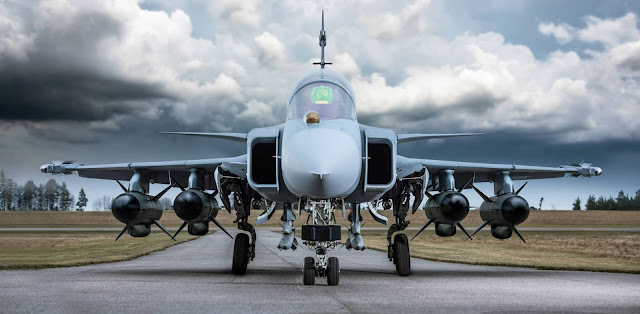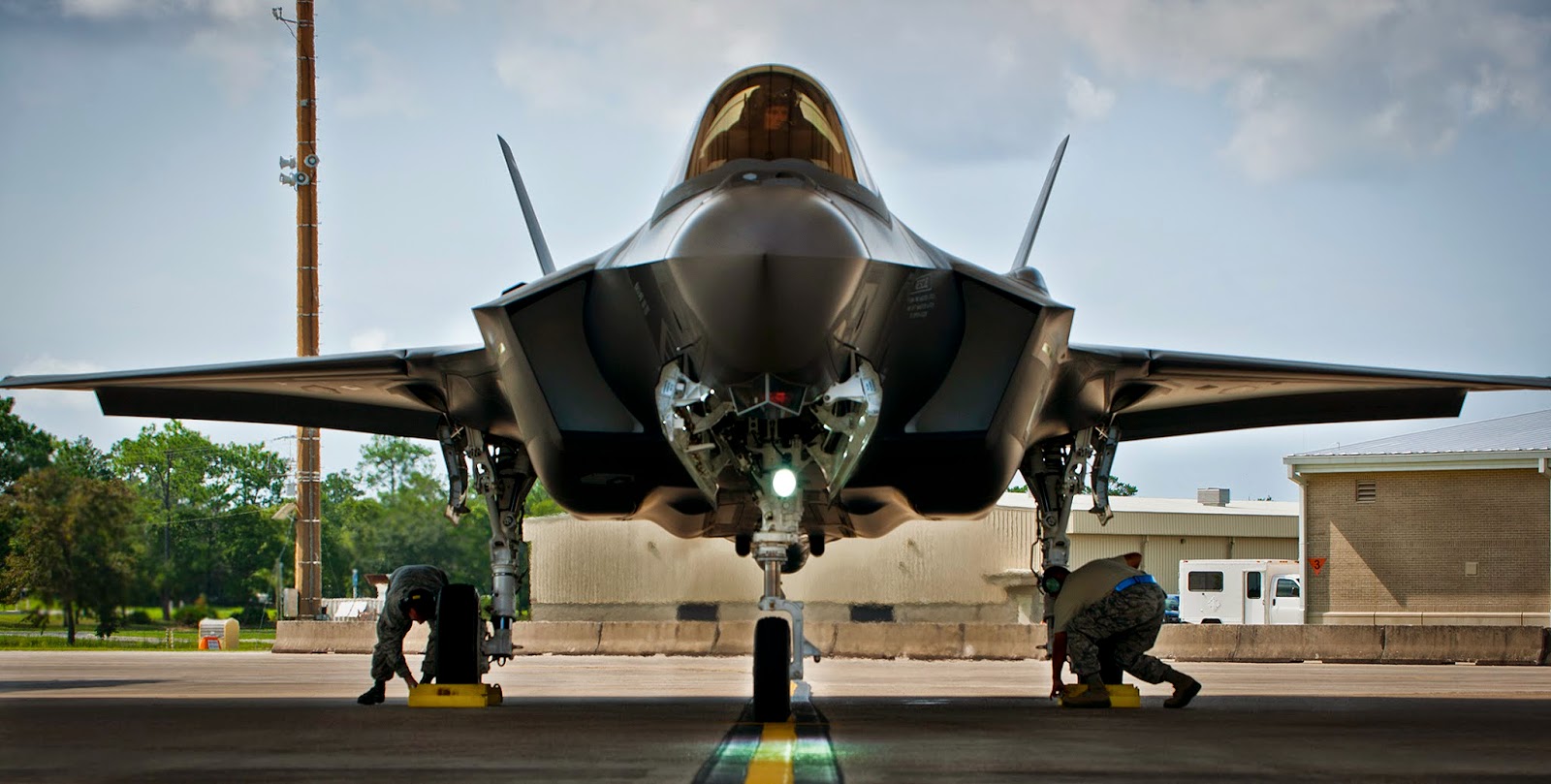Fighter Jet Fight Club: Typhoon vs. Super Hornet!
Growing up, I was obsessed with fighter aircraft. Almost every flat surface of my bedroom was festooned with plastic models. Bookshelves were a virtual air show static display in 1:48ths scale. From the ceiling hung a 1:72 air battle as NATO aircraft escorted a B-1B bomber against a fleet of Soviet MiGs. I blame my inability to ever do calculus on the brain cells lost due to the fumes given off of enamel-based paint and Testor's model glue.
As I approached sixteen and the learner's driving permit that age entailed, my interest in military aircraft waned. Fighter jets came down, and pictures of Lamborghinis (and Samantha Fox) went up... Where once able to quote the top speed of F-4 Phantom II, now I rattled off 0-60mph times.
As I dove into magazines like Road & Track, Car and Driver, and Motor Trend, something became very apparent. European marques were far more desirable. How much interest can you really give a Pontiac Sunbird when put beside a BMW M3?
Perhaps it is this bias that has left me rather cold to the Super Hornet. Over the years, I have most certainly come to respect the aircraft, but it certainly does not fill me with the same awe as aircraft like the Eurofighter. The Typhoon just seems more ambitious. It was, after all, an attempt to cram a F-15-class fighter into a F/A-18 sized aircraft. By contrast, the Super Hornet is a F/A-18 enlarged to F-15 size.
Then again, multirole fighter aircraft are not exactly compact sports sedans, are they?
Do you know the rules yet? Here they are.
Air-to-Ground:
Interdiction/Penetration: As "4+ Generation" aircraft, both aircraft have been designed with an emphasis on reducing RCS. Neither is truly a "stealth" aircraft, but both have significantly smaller reflections than older fighters. Both aircraft also carry a fairly impressive EW/ECM suite.
The Super Hornet does have the potential to be stealthier however, as Boeing has started development on both CFTs and enclosed weapon pods in an attempt to make an armed Rhino nearly as stealthy as a "clean" one. Eurofighter has worked on CFTs, but no weapon pods.
As things are now, neither aircraft has a clear advantage. The Super Hornet may be stealthier in the future with upgrades, but is does beg the question: "Will those EWPs work on other fighters?" Advantage: Tie
Deep Strike: Both aircraft have similar range, or at least similar enough to make any differences trivial. Both aircraft will likely have access to range extending CFTs as well, so no real advantages to either one here.
The Super Hornet has a slight trump card in the AGM-158 JASSM-ER. This extended range ALCM has been enough to give the Rhino an advantage here. If that was not enough, the ability for other Super Hornets to act as a buddy-tanker and escort their comrades part-way before topping of the tanks gives it the win here. Advantage: Super Hornet
Payload: As usual, this category is a straight up numbers game. The Super Hornet carries up to 17,750lbs on eleven hardpoints. The Eurofighter carries up to 16,500lbs on thirteen hardpoints.
The Super Hornet has the edge in sheer tonnage, while the Typhoon has more mounting options. How about we just call this one even? Advantage: Tie
Close air support: Again, there is very little separating these two aircraft. The Typhoon does have the option of mounting the excellent Brimstone missile, however. This is preferable to the Super Hornet's venerable (and much bigger) AGM-65 Maverick. Both aircraft can mount targeting pods for precision targeting.
The Super Hornet does have the advantage of being a better performer at lower speeds and altitudes however. Future integration of the Brimstone (or more likely the SPEAR) would bring it out ahead, but without that capability it breaks even with the Typhoon. Advantage: Super Hornet
Air-to-ground winner: The Super Hornet is clearly the better attack aircraft of the two. With a few relatively simple upgrades it would be even better. An "Advanced Super Hornet" would likely make a clean sweep in the air-to-ground category. As is, it still comes out ahead. When you want to haul a lot of stuff, you shop for an American pick-up truck, not a European sport wagon. Winner: Super Hornet
Air-to-air:
First look, first kill: The Super Hornet has some pretty neat kit, both now and in the horizon, that help it in this department. Not only does it have its nifty APG-79 AESA radar, but it has the option of a new IRST mounted on a belly tank. If Boeing can convince future buyers to pay for the Advanced Super Hornet, than an IRST will likely be built in.
Unfortunately for the Super Hornet, even with upgrades, it is still outclassed by the Typhoon. The PIRATE IRST has been an integral part of the Eurofighter since the very beginning. Soon the Typhoon will have an impressive "CAPTOR-E" AESA radar that utilizes about 50% more T/R modules as well as a movable wash plate that allows for 200° scanning.
For detection, the Super Hornet is good. The Typhoon is an absolute beast, however. Advantage: Typhoon
Beyond visual range: Long time readers can probably guess where this one is going. The Typhoon flies faster and higher. It also has supercruise. It has a superior radar. All of these factors give a distinct range advantage to its BVR missiles. Speaking of which, the Typhoon carries either the AIM-120 AMRAAM or the MBDA Meteor.
The Super Hornet is simply outclassed here. Even if it were to receive Meteor integration in the future (a fairly easy task) it would still be the underdog. Advantage: Typhoon
Within visual range: Luckily for the Super Hornet, the Typhoon's dominance at longer ranges diminishes slightly at shorter ranges. Both fighters are equipped with HMDS allowing for easy "over the shoulder" targeting.
The Typhoon still has the advantage here, however. It does have a built-in IRST whereas the Rhino's is tacked on. It also has a much wider weapon selection, capable of mounting ASRAAMs, IRIS-Ts, or AIM-9 Sidewinders. The Rhino is limited only to the Sidewinder so far. The Typhoon also enjoys a superior power-to-weight ratio and the ability to make more violent maneuvers (9 vs 7.6g).
A Super Hornet needs to be extremely careful when engaging a Typhoon. Advantage: Typhoon
Dogfight: As speeds and energy decrease, the Super Hornet finally begins to get the upper hand. The Typhoon's design is optimized for flying near supersonic at high altitudes. As it gets slower and altitude decreases, its big delta wings create more drag.
Low and slow is where the carrier-capable Super Hornet really comes into its own. Its thin, stubby wings and twin tail make give the pilot unmatched control at lower speeds and altitudes. This comes in very handy when landing on a carrier or pointing its gun at a pesky opponent.
Typhoon pilots are advised to not get caught up trying to chase the Super Hornet's tail. In the low-and-slow regime, the Rhino dominates. Advantage: Super Hornet
Air-to-air winner: From its inception, the Typhoon was meant to dominate the best modern fighters. Instead of resorting to tricks like stealth, the Europeans kept it simple. The Typhoon wins air combat the old-fashioned way, with speed, agility, a good radar and good weapons. Winner: Typhoon
Versatility/Logistics:
Versatility: Has the Super Hornet ever lost this one? It does damn near anything you might want it to do, and there are enough variants (both current and planned) to fulfill whatever fighter needs the operator might have.
The Typhoon has advanced into a decent multirole fighter. In order to compete with the Super Hornet for versatility, it would have to be available in a dedicated electronic warfare version and a carrier version as well. Advantage: Super Hornet
Logistics: Interoperability is word that gets thrown out a lot without much discussion on what the term actually means. In short, how well does each platform get along with others? The answer to this is "Very well." Both aircraft are bound to be part of any coalition action.
Both aircraft have been produced in similar numbers. The Super Hornet has seen far less customers however, being selected only by the USN and the RAAF. The Eurofighter is more widespread of a platform, but there have been concerns about parts availability (this may have more to do with European austerity measures and cuts to military spending). The Typhoon does have a more varied weapon selection, as the Super Hornet is limited to U.S. sourced ordinance.
In the end, it really just comes down to location. Any coalition action near Europe will highly involve the Typhoon, while any action in the Pacific will involve the Super Hornet. Advantage: Tie
Final Score:
Air-to-ground: Typhoon = 2 - Super Hornet = 4Air-to-air: Typhoon = 3 - Super Hornet = 1
Versatility/Logistics: Typhoon = 1 - Super Hornet = 1
Final Result: Typhoon = 6 - Super Hornet = 6
Given the Eurofighter Typhoon's utter dominance in the air-to-air category, it gets the final nod as winner.
Like a finely tuned European sports sedan, the Typhoon certainly does offer the promise of better performance. This performance comes at a cost however. Shopping at a Jaguar or Mercedes-Benz dealer is not for the faint-of-heart or light-of-wallet. For most of us, good ol' domestic brands are "good enough".
Sometimes, those domestic manufacturers come out with some surprises. In some cases, all that is needed is a little (or a lot) more power. As much as I lust over Land Rovers, BMWs, and the like; I still love my Jeep Grand Cherokee... Yeah, It's got a Hemi.
How would you rate these two aircraft if you were in the driver's seat?







Comments
Post a Comment